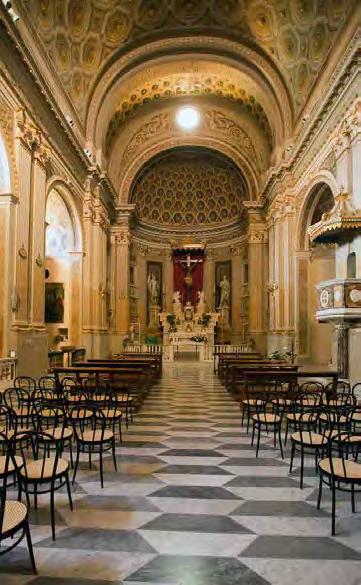
3 minute read
The Traditional Mass in Sardinia
By Alberto Carosa
Friday, 14 September 2018, the Feast of the Exaltation of the Holy Cross, was a landmark date for the celebration of the Mass in its Extraordinary Form: the creation of a traditionalist Personal Parish in Cagliari, the capital city of Sardinia.
As a journalist covering traditional liturgy and related issues, I was stunned by the silence on a development which is highly likely to produce far-reaching consequences in the not too distant future.
If this silence does not come as a surprise with regard to the mainstream secular media, much less so for Catholic media outlets, which almost completely ignored the news, with the exception of some traditionalist portals. Yet, the wide ranging implications of this initiative cannot be overestimated. Especially for the precedent set by His Excellency the Most Reverend Mgr Arrigo Miglio, Metropolitan Archbishop of Cagliari and Primate of Sardinia and Corsica, following his announcement last July that a personal parish in the capital of the island would be created for the pastoral care of the faithful linked to the Extraordinary Form of the Roman Rite.
The Basilica of Santa Croce (Basilica of the Holy Cross) – from which the parish takes its name – is the seat of the new personal parish church in the old Castello district, in the historic centre, near the Duomo. The Basilica is located in the ancient Jewish ghetto, where the synagogue stood centuries ago, until 1492, the year of the expulsion of the Jews from the Kingdom by Ferdinand II of Aragon. Once the Church was built, it was entrusted first to the Arciconfraternita del Santo Monte di Pietà (Archconfraternity of the Holy Pawnshop) and in 1564 to the Jesuit fathers. Since 1809 it has belonged to the Order of Santi Maurizio e Lazzaro. By archiepiscopal decree the Traditional Interior of the Basilica of the Holy Cross Rass has been celebrated since 2008, on Sundays and days of obligation, initially by the Rev. Canons of the Metropolitan Chapter and, for the past three years, by the chaplain Mgr Gianfranco Zuncheddu. Father Gianluca Pretta has been appointed parish priest, a recognition of his having so generously spread and encouraged the celebration of the Traditional Mass since 2007, in his previous parish of Santa Giusta in Gesico .

Interior of the Basilica of the Holy Cross
The new personal parish sets a somewhat significant precedent, although it is merely the second personal parish church after that of Santissima Trinità dei Pellegrini in Rome, whose erection was mandated by Benedict XVI with a decree dated 23 March 2008, to the then Rome Cardinal Vicar Camillo Ruini “for the pastoral care of the faithful of the Diocese of Rome who wish to have the Mass and all the Sacraments according to the ancient form of the Roman Rite”. But there is a fundamental difference: whereas the personal parish church in Rome does not depend on territorial boundaries and was, and still is, entrusted to the Priestly Fraternity of St Peter (FS SP), a n international Clerical Society of Apostolic Life of Pontifical Rig ht under the aegis of the Pontifical Commission Ecclesia Dei, the parish in Cagliari has been entrusted to the local diocesan clergy. We have other examples, more notably in the US and UK, of parishes and churches entrusted to the FSSP and other Ecclesia Dei Institutes, but as far as is known, there are no other examples of parish churches specifically devoted to the celebration of the ancient rite by local diocesan clergy for the local faithful.
On the occasion of the official taking possession of Santissima Trinità dei Pellegrini on 8 June 2008, the then newly appointed rector, Fr Joseph Kramer, an Australian priest of the FSSP, was interviewed by Radio Vaticana. This parish, he was quoted as saying, “is open to all the faithful who wish to attend the sacraments and the Holy Mass in the ancient form of the Roman Rite... The idea is to have not only the Mass, but all the Sacraments - baptisms, weddings - in addition to Lent and the Easter Triduum.”
Fr Kramer agreed with the late Cardinal Castrillon Hoyos when he said the creation of this parish had an exemplary value for other dioceses, both in Italy and worldwide. “Y es, because Rome is always an example, a city that is central to the whole of Catholicism and other bishops have already decided to open parishes following the example given here in Rome, and that is very important”, the Rector was quoted as saying.
The example set by Rome was followed by Mgr Arrigo Miglio ten years later.









